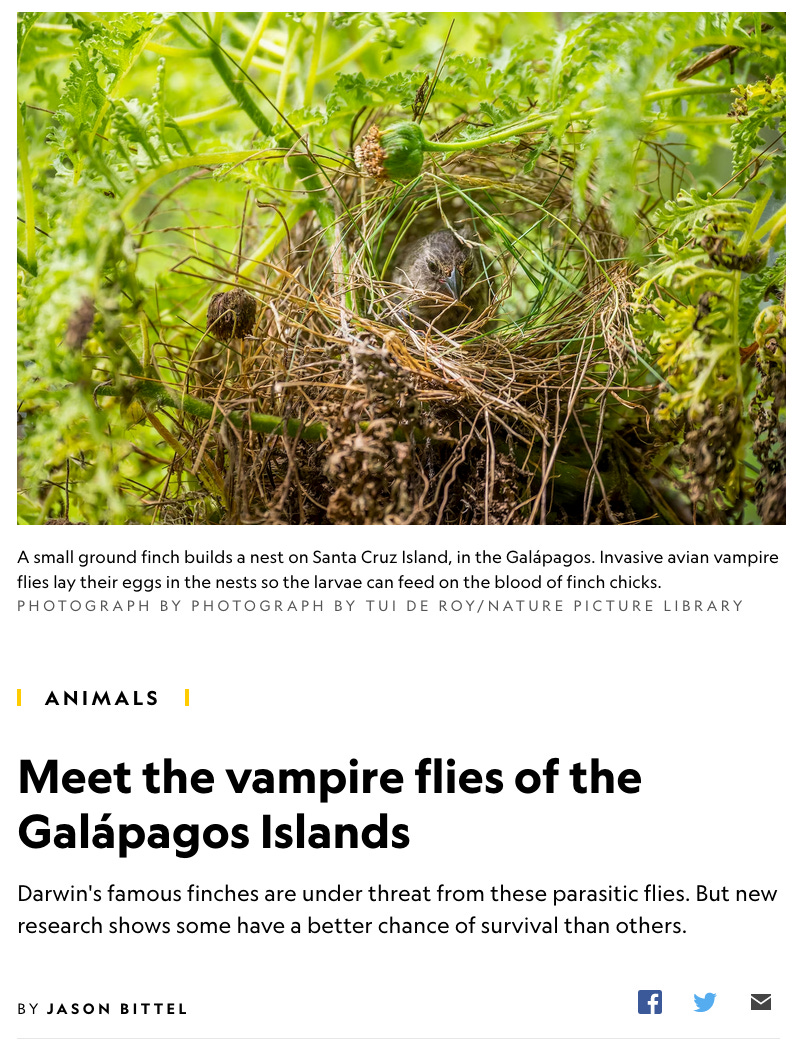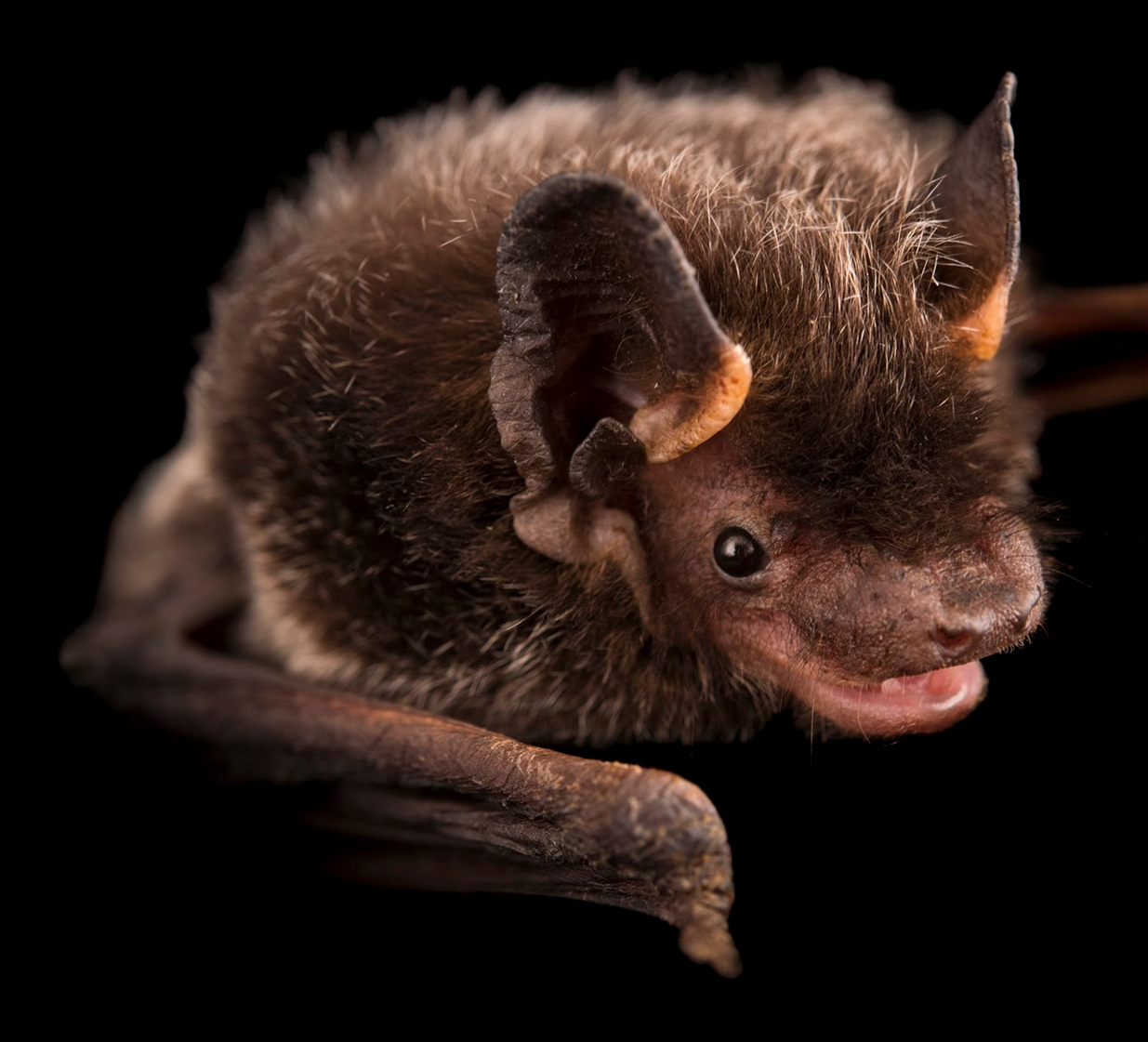I Am Here For The Wonder
From singing bats to baby great whites, the never-ending flow of scientific discovery should inspire the hell out of all of us.
Hey, remember me? Somewhere, some time ago, you signed up for this newsletter, and then probably forgot all about it. That’s mostly my fault. It’s been since November 2023 that I’ve written. And I guess I’m just a pretty pitiful pen pal.
But the good news is 1.) I’m still alive and 2.) I’ve been cooking up all kinds of weird and wonderful animal content for you.
Did I mention I joined TikTok? TikTok!
If that doesn’t tell you how desperate I am to share wild wonder with the world, then I don’t know what does. Please give me a follow and a share, if that’s your kind of thing.
Avian Vampire Flies, anyone?
Over at National Geographic, I have a new story about a bunch of endangered birds that taught Charles Darwin about a kooky little thing we call evolution, and how those same birds are getting absolutely razed by avian vampire flies.
Yeah, I said AVIAN. VAMPIRE. FLIES.
As larvae, or maggots, the flies literally suck all the blood out of Darwin’s finches chicks. And in bad years, the parasites can crush the entire breeding population. The good news? A super cool scientist named Sarah Knutie is on the case. Through incredibly laborious and ingenius experimentation, she’s figuring out exactly how the maggots do what they do, and better, how to stop them before Darwin’s finches disappear.
LINK: Meet the vampire flies of the Galápagos Islands
Baby great white shark (do do do do do do do do do)
Would you believe that for all we’ve done and seen in this world, no one on earth has ever seen a great white shark give birth?
Like, National Geographic and the Discovery Channel both air entire weeks worth of shark content every summer, and scientists are out there all the time trying to study these animals, and yet, this moment still manages to elude us.
But recently, we got something pretty close. Off the coast of California, a scientist and filmmaker used a drone to capture what appears to be a very newborn great white shark. While scientists can’t say for sure how old the shark is, the fact that it has a milky white material still sloughing off it as it swims suggests that the wee babe (which was still about five feet long) may have just popped out of its momma’s oven. (Yes, you’re understanding this correctly — great whites give birth to live young!)
I wrote about the sighting for National Geographic here: This might be the first newborn great white shark ever recorded
Eyelash viper beauty pageant
Elsewhere in wild wonder, we have five new species of eyelash viper, and every one is a total smoke show. Interestingly, these pitvipers are known for being polychromatic, which means that the snakes in a given area can vary widely in coloration. We even give them fun names to describe the patterns, like they were Mighty Morphin’ Power Rangers.
There’s the coffee morph, the Christmas morph, the red wine morph, and the ghost morph. (Ghost morph? Isn’t that the one where Tommy, the Green Ranger, comes back as the White Ranger?)
Anyway, even snakes of the same litter can be totally different in color, kind of like kittens or puppies! (Another side note to say that, yes, eyelash vipers give birth to live young, too!)
Anyway, super scientist Alejandro Arteaga has been hard at work sussing out the genetic differences between each of these species. And it doesn’t hurt that he’s an ace photographer. You can read more about all of this over at National Geographic:
Surprise: 5 new species of the mesmerizing eyelash viper discovered
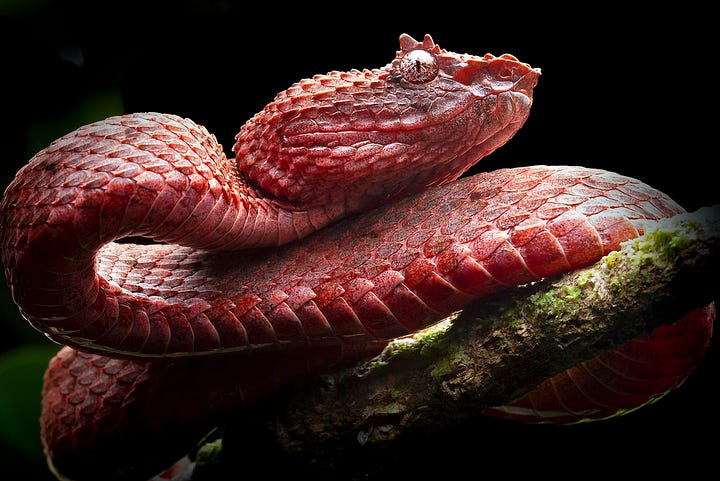

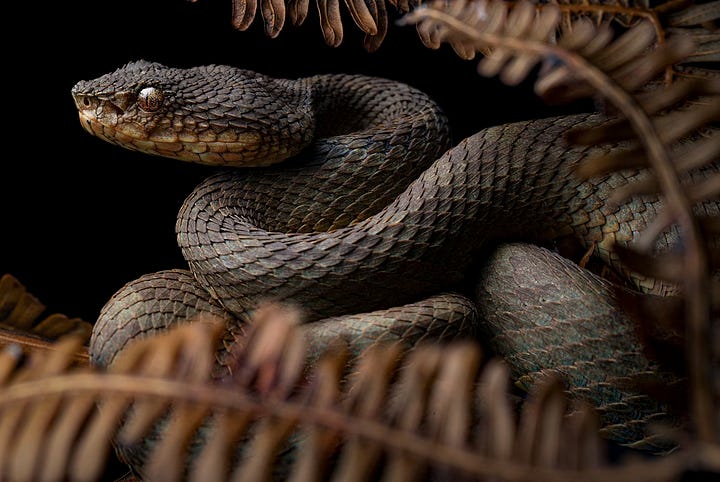
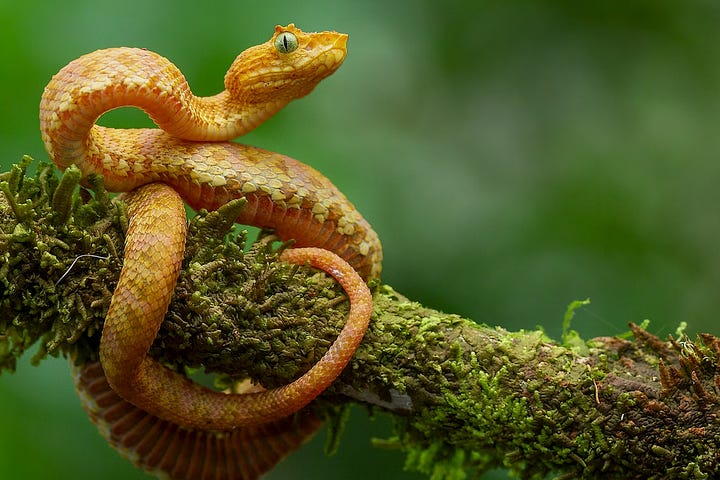
These bats can sing
Yeah, I didn’t know bats could sing, either. But scientists just discovered that silver-haired bats—which are one of the most common bats in forests across North America—apparently like to belt it out.
Best of all, because the sounds are not used for echolocation or even social communication, scientists think they might be love songs. We did this one just in time for Valentine’s Day, as you do.
Only one other species of singing bat was known in North America before this, and what’s more, the scientists believe that now that we have two, we’ll start discovering tons and tons more.
“I expect that we’re going to see an explosion of these kinds of observations, and it’s really going to change the way people think about bats,” said one of the experts I reached out to for this recent. National Geographic story.
Valentine’s Day Bonus: The scientist who made the discovery, Cori Lausen, told me a little story about how bats played a role in meeting her husband. Also, armpits.
Confused? Curious? Read more here: Bats can sing—and this species might be crooning love songs
How lucky are we?!
Sometimes, when I tell people that I write about animals for a living, I get an incredulous look in return. And I get it. After all, how much could there be to write?
With more nature documentaries, scientists, drones, remote cameras, and fancy satellites than ever before, you’d think we’d have hit a wall on wildlife discoveries.
But the hits. They just keep coming. And I’m tickled pink to be along for the ride.
Anyway, if weird animal stuff is your jam, too, then please hit the subscribe button or considering sharing this post with a friend. After all, don’t cost nothin’.
As for me, I’m writing a new kids book (more on that in a bit), still working on my animal book for National Geographic (that one is for adults!), reading Ben Goldfarb’s new book, Crossings: How Road Ecology Is Shaping The Future Of Our Planet, and generally just doing my best to keep throwing seven different kinds of smoke.
Until next time!







